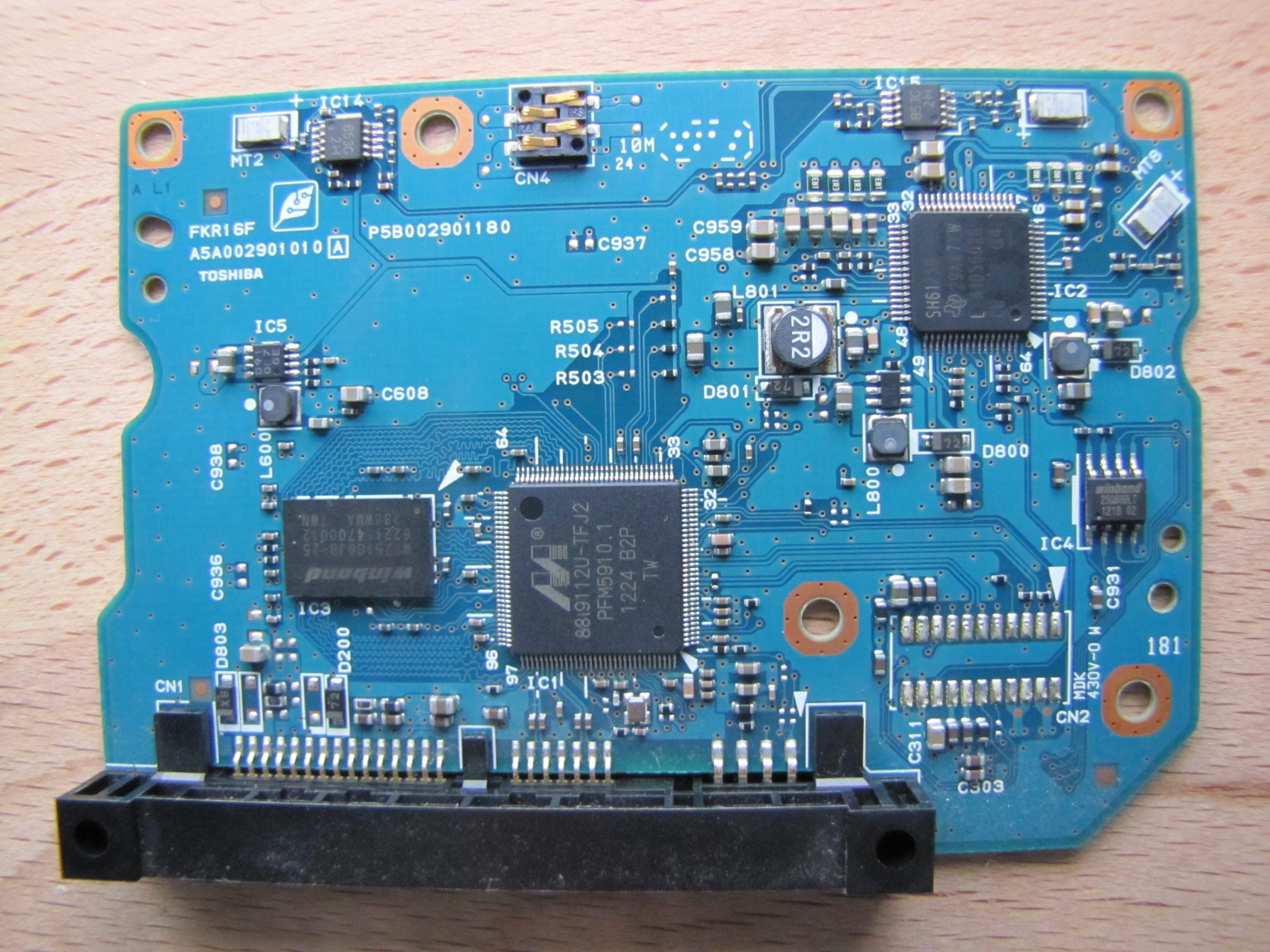Shortly after Toshiba’s acquisition of Fujitsu, their presence in the 3.5″ hard drive market would begin to blossom. The MK1002TSKB is an enterprise-class drive from Toshiba, released and announced in the first quarter of 2011. This model would hang around for only a little while, being phased out in early 2013.
Compared to current Toshiba models, these share a few characteristics, yet demonstrate elements which were left behind.

Drive Attributes ---------------------------------------- Toshiba MK1002TSKB ---------------------------------------- Capacity 1TB Mfc Date 2012-12-16 Format 3.5" Interface SATA Platters 2 Heads 4 RPM 7200 Protocol Serial-ATA/300 Codename Mustang ----------------------------------------
Sharing a similar design to modern-day equivalents, these drives can be assumed to be fairly early days for Toshiba in regards to their new Fujitsu-hybrid architectures. A main difference here is the distinctive extra shielding covering the actuator assembly, being removed on later models such as in the entire MG-prefix lineup.
This particular design was released in two capacities, the MK1002TSKB (as above) at 1TB and the MK2002TSKB at 2TB (with 4 platters, 8 heads). Toshiba also released these drives with a SAS interface, the suffix changing from TSKB (indicating SATA) to TRKB.

These were made in the Philippines, which isn’t anything surprising with Toshiba’s ongoing presence in the country concerning drive manufacturing, following that of Fujitsu with 3.5″ options. This drive dates from late-2012, indicating it’s a fairly late example in the production of these models.


There’s nothing special going on when concerning the underside of these, aside from the bizarre breather-hole location just above the spindle motor.

There’s not much to speak of under the PCB either, some foam, thermal pads & the usual head-stack connector.

Featuring a Marvell controller IC, Winbond buffer RAM and a TI-made motor controller IC, these aren’t anything special. Toshiba’s RoHS compliant leaf silkscreen is present though, which is a fun touch.

Seeing as this drive was pulled from a loose caddy, the power on hours certainly suggest its had quite the life already. Nonetheless, these feature interesting firmware features such as “Load Friction”, alongside the usual “G-Sense Error Rate” which seemingly trips as much as it does on newer Toshiba drives (comparing to my own N300’s).

It’s no surprise that modern Toshiba drives are based on these to a certain design extent, but it’s clear to see the differences they both hold all the same. Much has changed of course, with a miriad of both enterprise and consumer models being present between these two, but Toshiba has kept a relatively consistent design methodology nonetheless.
The cache total has quadrupled in 10 years, going from 64MB on the MK1002TSKB, to 256MB on the N300’s.

A decade can change a lot, but the differences are few and far between compared to modern high-capacity Toshiba drives, at least from a design perspective. A particularly interesting change is the breather hole text, changing from “BREATHER HOLE DO NOT OBSTRUCT” on the MK1002TSKB to a simple, yet clear, “DO NOT COVER” on the N300’s.
Toshiba clearly changed their spindle-motor supplier between the two. The MK1002TSKB has a rather gentle startup procedure, comparatively. One would assume Toshiba were still using the same standard Fujitsu-supplier type motors due to their distinctively different start-up current pick-up behaviour, but that’s hard to verify.
These are certainly quite the loud beasts, but being a forefront example of Toshiba’s re-immersion into the 3.5″ drive space, they’re quite interesting models to come across.
If you missed the video I made on this drive, you can find it here: